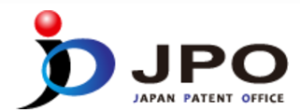 The way it has been in the past, if a US PCT applicant were to make use of the Japan Patent Office as an International Searching Authority, the applicant would need to make sure that the application falls within particular subject matter (“green tech”). The practical consequence of this was that as a general matter, US filers tended not to select ISA/JP. But things changed on July 1, 2018 and now it is much easier for US filers. Continue reading “ISA/JP becomes easier for US filers to use”
The way it has been in the past, if a US PCT applicant were to make use of the Japan Patent Office as an International Searching Authority, the applicant would need to make sure that the application falls within particular subject matter (“green tech”). The practical consequence of this was that as a general matter, US filers tended not to select ISA/JP. But things changed on July 1, 2018 and now it is much easier for US filers. Continue reading “ISA/JP becomes easier for US filers to use”
An opportunity to save a little money on search fees
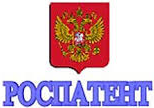
On August 1, 2018 the search fee payable to the Russian international searching authority will drop. It is presently $691 and will drop to $638.
This offers an opportunity to save a little money for the applicant who is planning to use ISA/RU. If you have a client who is planning to file a PCT application using ISA/RU, and if you have the ability to postpone the filing until August 1, you can save $53.
EPO search fee for US PCT filers will drop September 1
 The search fee paid in US dollars by US filers for a PCT search carried out by the EPO will drop on September 1, 2018.
The search fee paid in US dollars by US filers for a PCT search carried out by the EPO will drop on September 1, 2018.
Presently $2207, it will drop to $2095.
Canada joins Hague Agreement
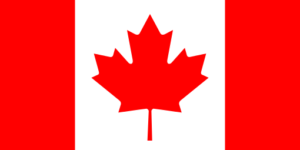 On Monday, July 16, 2018 Canada deposited its Instrument of Accession to the Hague Agreement.
On Monday, July 16, 2018 Canada deposited its Instrument of Accession to the Hague Agreement.
Normally what one would expect from this event is that the Agreement would enter into effect from October 16, 2018 (three months thereafter). But that is not what is going to happen. Continue reading “Canada joins Hague Agreement”
USPTO must really really scrap its Entrust login system
For years and years I have been listing the many reasons why USPTO should have scrapped its Entrust login system many years ago.
Now there is yet another reason that USPTO must do this. The USPTO’s Entrust login system relies upon the use of Java from Oracle. And Oracle has made this announcement:
Public updates for Oracle Java SE 8 released after January 2019 will not be available for business, commercial or production use without a commercial license.
I gather the license fee will be $2.50 per user per month.
I fear that USPTO’s way of dealing with this development will be to spend (applicants’) money buying a commercial license from Oracle to cover all users of the Entrust login system.
Saving money on your cell phone – Mint?
 Over the years I have usually been very lazy, paying little or no attention to my cell phone bill. Years ago I sort of got into a rut, clicking around to use whatever cell phone plan on AT&T offered unlimited data and unlimited domestic calling and unlimited texting. Maybe a year ago I found I was paying $180 per month, and then I got it down to $120 per month, and then with a phone call I got it knocked down to $80 per month. I thought I was doing pretty well, and then realized that there are MVNOs that charge a lot less. I finally took the plunge and now it looks as though I will be paying $23 per month for unlimited talk and text and data. In this blog article I discuss factors that I think you might want to consider in possibly switching to a less expensive carrier. Continue reading “Saving money on your cell phone – Mint?”
Over the years I have usually been very lazy, paying little or no attention to my cell phone bill. Years ago I sort of got into a rut, clicking around to use whatever cell phone plan on AT&T offered unlimited data and unlimited domestic calling and unlimited texting. Maybe a year ago I found I was paying $180 per month, and then I got it down to $120 per month, and then with a phone call I got it knocked down to $80 per month. I thought I was doing pretty well, and then realized that there are MVNOs that charge a lot less. I finally took the plunge and now it looks as though I will be paying $23 per month for unlimited talk and text and data. In this blog article I discuss factors that I think you might want to consider in possibly switching to a less expensive carrier. Continue reading “Saving money on your cell phone – Mint?”
Selecting a new cell phone
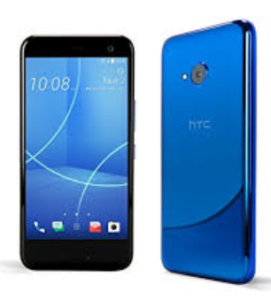 In this article I will propose that you buy your next cell phone from a different place than before, and maybe you will save several hundred dollars. Oh and toward the end of the article I will say a word or two for iPhone users. Continue reading “Selecting a new cell phone”
In this article I will propose that you buy your next cell phone from a different place than before, and maybe you will save several hundred dollars. Oh and toward the end of the article I will say a word or two for iPhone users. Continue reading “Selecting a new cell phone”
Can a Hague application claim priority from a Hague application?
Recently a colleague asked whether a second Hague application (international design application) can claim priority from a first Hague application. This is a very interesting question. The answer is yes, it can, under certain circumstances, as I will explain. Continue reading “Can a Hague application claim priority from a Hague application?”
Why would anyone convert a US provisional application to a non-provisional?
There is a procedure for converting a US provisional patent application into a non-provisional patent application. The practitioner who follows this procedure (instead of simply filing a non-provisional with a domestic benefit claim) will put the client in the position of incurring an extra government fee and losing some patent term.
So why would anyone ever carry out this procedure? There is a real-life situation where this might be the clever thing to do, as I learned the other day from a smart member of the EFS-Web listserv.
Continue reading “Why would anyone convert a US provisional application to a non-provisional?”
A nice airport amenity – free phone calls
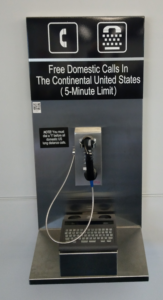
In the early 1980s, “shoulder surfing” was practiced near public pay phones to steal calling card digits and make long distance calls. In those days, the wary traveler would cup his or her hand around the pay phone keypad so that others could not see the calling card number being keyed in.
How times have changed, as we are reminded by this nice airport amenity — a public telephone offering free calls to any telephone number in the US. What do you suppose it costs the airport to provide this amenity? Continue reading “A nice airport amenity – free phone calls”
